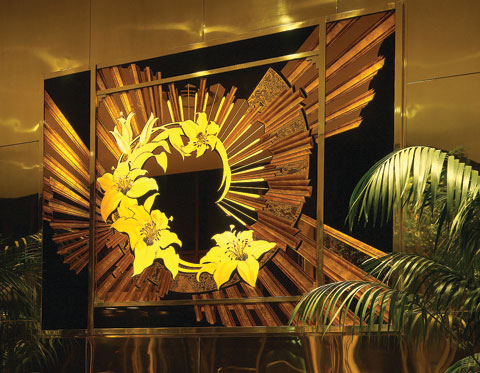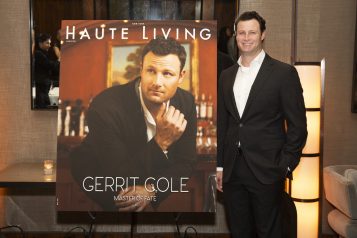A piece of integrated art tells the story of a building; a piece of brilliant cut ceilings reveals the latest design trend in New York City.
By Vanessa Valera
Photography courtesy of Arts in Architecture
Art and design have unquestionably impacted how we think and feel about the various spaces in our home. Today, the foundation of environmental arts has brought us livable artwork by successfully introducing unique pieces into residential and commercial areas around the country. New York City, the fashion capital of the United States, is home to countless art elements based in architectural jewelry, giving the Big Apple a lush feel. “There is a definite connection between adorning a beautiful woman and ornamenting beautiful buildings,” says Maura Smolover, principal of the renowned design firm Arts in Architecture.
Ornamenting residences with crystals has become a must for top design firms. Designers are following the steps of famous glass artists Rene Lalique and Louis Comfort Tiffany by incorporating jewelry techniques into architectural works.
Arts in Architecture serves as the perfect example of this crystal craze. The company still cuts brilliant crystals utilizing the same technique once employed for cutting fine gemstones, including diamonds. But why is this technique so significant? Well, no one uses it anymore. Most designers abandoned the method decades ago because of the enormous amount of time required to handcraft each piece. The company has crafted a crystal glow into celebrity homes, five-star hotels and luxury yachts for more than two decades.
Not known for his simplicity, Donald Trump, one of Arts in Architecture’s loyal clients, gave the company a special assignment: a Golden Sunburst. The piece was made out of a very rare gold blast from the 1930s. “We could only locate enough of the special glass to make the 8-foot piece,” shares Smolover.
Time is certainly not an issue when it comes to art. The Golden Sunburst took from nine to twelve months to create, from searching for the glass to installing the piece. The radiant piece takes the place of a chandelier in the residential foyer. Now it is fair to say that Trump walks beneath the glow of refracted prismatic light everyday.
The architectural element showcases brilliant-cut amber glass with golden lines intersecting facets that radiate a burst of solar geometry. Indeed, the light transforms every surface it touches, making the piece the most important element in the room is a feast to the eyes.
Collaborating with the client to create the first impression of a space must be a priority for any designer. To wit, Smolover quotes the old adage, “You never get a second chance to make a first impression.”





















